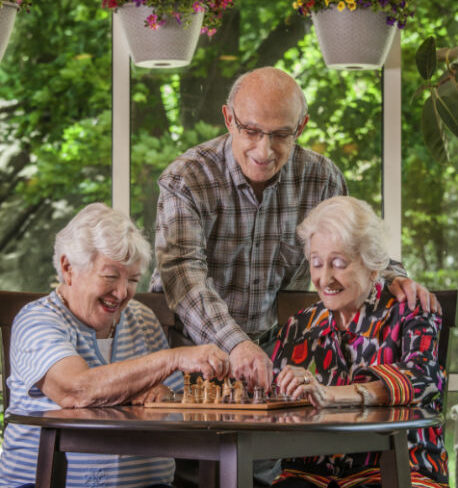Ask any caregiver who’s familiar with Alzheimer’s and they’ll tell you: safety is a major concern. Even in the early stages of the disease, confusion and balance problems can sneak up on a person without warning.
What you thought were random, isolated incidents may actually be warning signs that it’s time to get serious about safety.
Creating a Safe Environment Takes a Special Awareness
Dangers lurk in unexpected places. You may not realize the degree to which your loved one is experiencing confusion or ‘absent-mindedness’ until an incident occurs.
This is why it’s important to take a proactive approach to safety.
Be Proactive: Think Like an EHS Professional
In companies, there are Environmental Health and Safety (EHS) managers who constantly manage the safety of the company’s work environment. Their job is to keep the employees safe and healthy. Part of how they do that is to identify potential hazards and fix them before they cause problems.
As a caregiver for a senior with Alzheimer’s disease, you sometimes have to think like an EHS professional.
Learn to assess the environment with a critical eye. That way you can begin to predict accidents. Then, you’ll be better equipped to create a safe environment.
EHS managers also learn from incidents that do happen. They use near-miss and actual incidents to learn what went wrong. It allows them to adjust their procedures and processes accordingly.
Sounds pretty technical and awkward, doesn’t it?
But it doesn’t have to be.
Here’s a simple guide to get you started. Read on and you’ll be thinking like an EHS manager in no time.
What it Takes to Make the World Safer for People Living With Alzheimer’s
When it comes to creating a safe world for someone with Alzheimer’s, there are basically three levels of intervention:
- In Society. Making life safer for someone who has Alzheimer’s can take place at the community level. Examples would include awareness programs and community-wide safety initiatives.
- The Environment. We can make the immediate surroundings safer with techniques, tools, and preparation in the home.
- At the Personal Level. Through care, therapy, and adaptation, the world can become safer for those who suffer from Alzheimer’s disease.
Aside from joining an awareness movement, there’s not much you can do at the societal level right now. And at the personal level, as a caregiver for someone with Alzheimer’s, you’re probably doing more than you can handle already.
This is about that second level of intervention: the environment
A Checklist for Making the Home Environment Safe
The experts at WebMD suggest five major areas in the home that need attention in order to maximize safety. They are:
- Entrances and Exits. Remove clutter, install sensors that turn on outdoor lights, make locks are easy to use, and secure handrails. Consider investing in a home security system that alerts you when an exterior door is opened.
- Kitchen. Child-proof the cabinets which contain dangerous items like cleaning products and sharp objects.
- Bedroom. Ensure your loved one can get in and out of bed safely. A sturdy grab bar at their bedside can help. If necessary, install a monitoring system so you know when they need your support or if they get up during the middle of the night.
- Bathroom. Assess the tub/shower for safety and ease of use. Make it slip-proof with non-skid stickers. Get a shower stool. Lock up medications and electrical appliances. Get rid of towel bars that might be inappropriately used by the senior to pull themselves out of the tub. Mount a grab bar in its place.
- General. Install safety alarms including smoke and carbon monoxide detectors. Get rid of fire hazards like space heaters and electric blankets and tripping hazards like throw rugs and loose electrical cords. Lower the temperature on the hot water heater to prevent burns.
It Takes a Lot – We Can Help
All this may sound like a lot of work — on top of everything you already do! You might want to hire an occupational therapist or a contractor to help you make these changes.
And if you’re overwhelmed trying to juggle so many important roles in your life, we can help. If you have a loved one who’s showing signs of Alzheimer’s or who has already been diagnosed, you may want to learn about our Bridge to Rediscovery program.
This innovative, award-winning program offers not only a safe environment but also care and treatment for people who suffer from all forms of dementia. Please call us or visit at any time to learn more.

